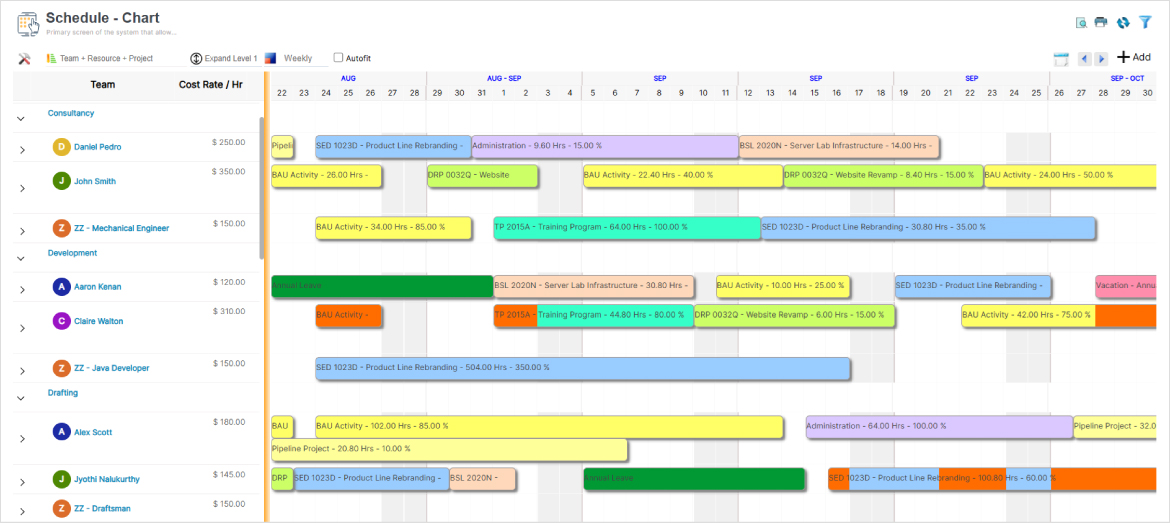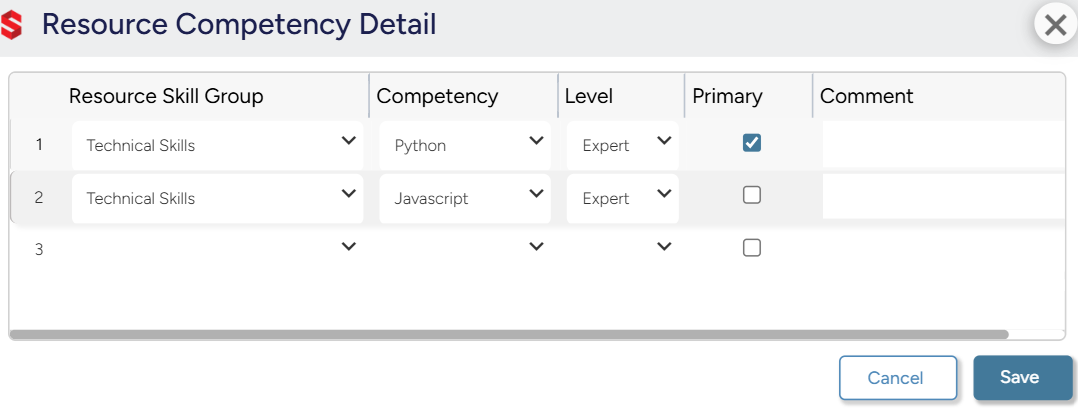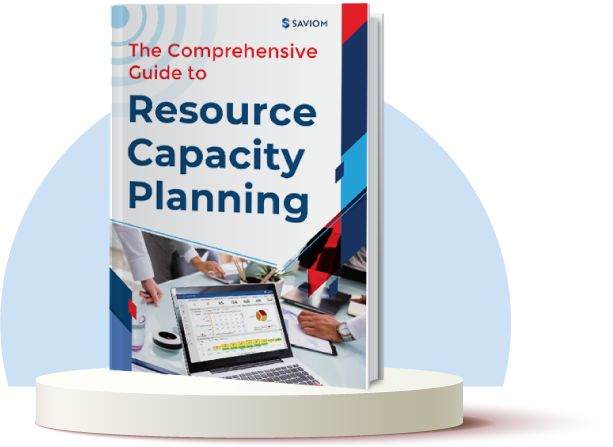Globalization and hyper-competition have compelled numerous businesses to expand their operations across borders to reduce costs and maximize profitability. In this scenario, effective global project management has emerged as a critical driver in business success. It helps them manage projects that involve multiple stakeholders, diverse teams, and complex regulatory environments.
However, managing global projects is far from straightforward. It requires project managers to navigate a wide array of challenges, from coordinating geographically dispersed teams to overcoming cultural and linguistic barriers. Without the right strategies and tools, these challenges can significantly impact deliverables, reduce efficiency, and increase the risk of project failures.
In this blog, we will explore seven key challenges in global project management and ways to resolve them.
But first, let’s begin with the basics!
What is Global Project Management?
Global project management is the process of planning, executing, and managing projects across multiple countries. It involves collaborating with diverse teams and stakeholders from various cultures, languages, and time zones to accomplish project objectives efficiently.
Managing global projects requires standardized methodologies, cultural intelligence, strong leadership, effective communication, and advanced digital tools to ensure smooth execution across borders. Moreover, effective global project management enables organizations to leverage global talent while reducing resourcing costs. This helps them gain a competitive edge, enhance profit margins, and improve client satisfaction.
Now that the basics are clear let’s understand the various global project models.
Different Types of Global Project Models
The choice of the delivery model can significantly impact the overall project’s performance. Therefore, companies should select a model solely based on the project requirements.
Here is a rundown of four different global project models. Let’s have a look at them:
Onshore or Onsite Delivery Model
In this model, both the organization handling the project and the resources utilized will be from the exact location. The advantage of the onshore project model is that businesses can work with native teams with no language & time-zone barriers. At the same time, the project will be executed with the direct supervision of the client and the project stakeholders. However, the cost is a considerable disadvantage because companies often cover stay and other overheads for resources.
Offshore or Offsite Delivery Model
Organizations with an offshore model handle the project from one location, and the team works from another region, preferably a low-cost area. The most significant advantage of this model is significant cost reduction. However, it comes with challenges of socio-linguistic and time differences. The key resources are still required to travel during the project initiation or implementation phase. However, that cost will be negligible compared to hiring local resources at an onsite location.
Read More: Project Initiation: Nine Effective Steps to Kick-off Projects the Right Way
Nearshore Delivery Model
In this model, the organization is located in one location, and the project team operates from a different country but within the same continent or time zone. For example, organizations located in the United States or Canada can utilize cost-effective resources from Mexico for their projects. This way, firms can save money while maintaining deliverable quality. Moreover, there is the added benefit of more regular site visits and no hassle of time zone differences.
Hybrid or Dual Delivery Model
This model is a combination of the previous three models. Organizations may use this model depending on the project’s requirements. For instance, if the project is headed in the US, managers can hire a team from India, Mexico, and Austin, which means some resources will be offshore, nearshore, or onshore. This makes it a very flexible and ideal model with all the advantages of a global cost structure.
Now that we have learned about the different types of global projects, let’s understand them through a real-life example.
An Example of Global Project Management
Let us consider an example of a US-based multinational bank developing a new application to cater to its global customers. The project manager adopts a hybrid delivery model, which involves teams from North America, Europe, and Asia. The company’s headquarters in the United States oversees the overall project strategy, while a development team in India handles software coding.
On the other hand, a UX design team in Germany is responsible for developing user-friendly interfaces, and a marketing team in Japan is in charge of creating promotional campaigns. Additionally, UK-based compliance teams must ensure the software meets GDPR regulations in Europe and data privacy laws in other regions.
To manage this global project effectively, the company implements a cloud-based project management tool. The software solution is used by the project team for real-time collaboration and virtual meetings. Moreover, the project manager sets overlapping working hours to accommodate time zone differences and ensure seamless coordination.
Besides, the company established data centers in North America, Europe, and Asia that can provide 24*7 customer support. Thus, the bank ensures a successful product rollout, faster refinements, and a strong market presence across regions through an effective global project management framework.
Now, it’s time to learn about the advantages of effective global project management.
Benefits of Global Project Management
Global project management enables organizations to leverage resources, skills, and opportunities worldwide to achieve better project outcomes. Here’s a rundown of the key benefits:
Provides Access to a Global Talent Pool
Global projects allow organizations to tap into the expertise of highly skilled professionals from different regions. This diversity in talent ensures innovative solutions and better problem-solving. It also helps fill skill gaps that might not be available locally. Additionally, project managers get an opportunity to reduce project expenditure by hiring cost-effective global resources.
Promotes Cultural Diversity
Working with global teams improves creativity and promotes cultural diversity. It fosters teamwork and effective problem-solving by bringing diverse perspectives, ideas, and viewpoints to the table. This cultural exposure helps team members develop adaptability and improve interpersonal skills. As a result, it enables project teams to collaboratively to better outcomes.
Read More: What is Diversity in Project Management and its Importance?
Expands Market Reach and Strategic Opportunities
Global project management provides organizations with the opportunity to enter new markets. It allows them to tailor their services and/or products to regional preferences. Besides, operating on a global scale opens doors to valuable strategic partnerships with local businesses, vendors, and stakeholders. Therefore, it helps companies diversify revenue streams, build international partnerships, and boost their competitive edge.
Strengthens Risk Mitigation through Geographic Diversification
When a company operates in multiple geographical regions, it reduces dependency on a single market or location for resources and business opportunities. Therefore, access to global resources enables them to circumvent risks related to regional economic fluctuations, supply chain disruptions, or political instability. This ensures operational efficiency, business continuity, and more stable project outcomes irrespective of any issue in a particular region.
Read More: Enterprise Risk Management Framework: 8 Core Components
Now that we’re aware of the benefits, let’s move towards the challenges of global project management.
Global Project Management Challenges
Global project management faces multiple issues due to the complexities of operating across international borders. Below mentioned are the major challenges:
Absence of Centralized Visibility of Global Resources
Since managers recruit talent from multiple locations, they may not have all resource-related information on a single platform, creating silos. As a result, they will not get updates about resource profiles, skills, experience, availability, etc., eventually causing discrepancies, incompetent allocation, resource underutilization, or overallocation.
Communication Gaps Due to Language and Cultural Barriers
Language and cultural differences can create significant communication barriers within global teams. Due to linguistic differences, misunderstandings and misinterpretations can arise, hindering team collaboration. Moreover, conveying nuanced information accurately across cultures can be challenging, leading to unintended consequences and impacting overall project success.
Read More: Why Project Communication Skills are Important and How to Master Them?
Discrepancies in Managing Payroll of Multinational Teams
Managing payroll for multinational teams requires navigating complex tax laws, currency differences, and compliance requirements. Moreover, each region has unique employment laws and benefits structures, further complicating payroll processes. Thus, ensuring fair compensation and timely payments in a globally operated business structure becomes challenging.
Improper Scheduling Leading to Skill Mismatches
In global teams, improper allocation may result in resources being assigned tasks that do not align with their expertise. This can give rise to errors or rework and lower overall deliverable quality. Moreover, poor resource scheduling practices can lead to workload imbalances wherein critical team members are overloaded while others are underutilized. This hampers productivity and negatively impacts team morale.
Read More: What is Project Scheduling: Examples, Benefits, and Best Practices
Sub-Optimal Productivity Due to Overlapping National Holidays
Overlapping national holidays across different countries reduce team availability, leading to approval delays and misaligned deliverables. For example, while the team in the USA observes Independence Day on July 4th, their counterparts in India will still be working. Without proper planning, such unavailability can lower team efficiency, delay critical tasks, and disrupt project timelines.
Difficulty in Scheduling Meetings Due to Time Zone Differences
Finding common project meeting times across multiple time zones can be a significant challenge. It often leads to meeting fatigue and reduced productivity for team members who must participate in late-night or early-morning calls. Moreover, this issue intensifies when projects require active participation from multiple stakeholders for real-time decision-making.
Read More: 7 Tips on How to Conduct an Effective Project Meeting
Inability to Ensure Compliance with Country-Specific Laws
Every country has certain specific rules. As the global project manager, since you’ll be using resources from various countries, you must to abide by their compliance laws and employee-centric rules. So, if you utilize any resource from one such country, you will have to schedule them accordingly. Otherwise, it may cause legal issues, and employees may even file lawsuits against your organization.
Knowing the challenges, it’s time to understand how they can be mitigated to ensure an efficient global project management framework.
Best Practices for Managing Global Projects
Following certain best practices for managing global projects ensures seamless collaboration across diverse teams and regions, resulting in improved and consistent workflow. Here’s a rundown of them:
Leverage a Centralized Platform for Comprehensive Project Visibility
A centralized platform brings all project details under one roof, offering a clear and real-time view of schedules, resources, and progress. It helps project managers track deliverables, ensure teams stay aligned, and make data-driven decisions without delays.
For example, a robust project resource management tool provides dashboards highlighting task statuses and team utilization, making it easier to spot bottlenecks and adjust schedules. Moreover, using a unified platform reduces dependency on emails and fragmented communication modalities, enhancing overall team productivity.
Read More: Mastering Project Resource Management: A Comprehensive Guide
Establish a Robust Communication Plan
It is important to establish clear communication channels for daily discussions, project updates, and escalation points. This ensures that the global team is aligned and working towards shared objectives. For example, instant messaging tools can be utilized for urgent communication, and emails can serve as a channel for less time-sensitive discussions. Managers can also establish a well-defined reporting structure for regular project updates.
This structure removes ambiguity and ensures that the project team shares information with relevant personnel in an orderly manner. Moreover, they schedule regular review meetings to keep stakeholders informed about progress and seek their feedback. In conclusion, a well-documented communication strategy reduces misunderstandings and supports seamless project execution.
Schedule Meetings During Overlapping Work Hours
Organizing meetings across different time zones can be challenging in global projects. To address this, project managers can schedule meetings during overlapping hours to ensure maximum attendance and participation. Being mindful of regional working hours shows respect for team availability and improves employee engagement.
For example, a USA-based company working with teams in India can schedule recurring meetings at 3 PM GMT, which falls within standard working hours for most participants. In addition, they can record meetings for those who cannot attend and share detailed minutes of meetings. This approach ensures seamless collaboration without disrupting individual work schedules.
Read More: 11 Effective Strategies to Enhance Employee Engagement
Implement Effective Resource Scheduling Strategies
Efficient resource allocation ensures projects stay on track while keeping team workload balanced to prevent burnout. Project managers can achieve this by analyzing resource availability or capacity and assigning them to tasks based on skill sets, expertise, and interests. They can also implement optimization techniques such as leveling and smoothing to adjust project timelines based on resource availability.
For instance, if a key developer is on vacation, his tasks should be reassigned to some other resource in advance to prevent delays. Further, regularly reviewing schedules and making adjustments based on project changes ensures optimal resource utilization, maintains productivity, and ensures timely project delivery.

SAVIOM’s scheduling dashboard offers multidimensional slice/dice capability to adjust resource schedules seamlessly.
Create a Global Holiday Calendar & Plan Deliverables Accordingly
A comprehensive holiday calendar helps avoid scheduling conflicts and project delays. Project managers can record holidays from all regions and consolidate them in a centralized calendar. After that, they can share this calendar with the entire team to ensure transparency.
In addition, when planning project milestones and deliverables, it is important to account for these holidays to avoid last-minute resourcing hassles. For example, if your development team in Europe has an extended public holiday, you must ensure that deadlines are adjusted or resources are supplemented to meet timelines.
Read More: Project Milestones: How to Manage Them Effectively for Project Success?
Develop a Company-Wide Standardized Payroll Policy
A standardized payroll policy ensures fair and consistent compensation for global teams. For this, it is crucial to define payment structures, tax deductions, and compliance requirements based on the regions where employees are located. Moreover, using advanced payroll management software further simplifies this process.
Further, including provisions for currency fluctuations, international tax regulations, and employee benefits is beneficial. A clear payroll policy not only boosts employee satisfaction but also minimizes administrative complexities, ensuring smooth operations and preventing any workflow disruptions.
Stay Updated on Regional Legal & Regulatory Standards
Compliance with local laws ensures smooth project execution and mitigates potential legal risks. To avoid legal issues, project managers and stakeholders must stay abreast of local and federal labor laws, data protection regulations, and employment policies for all regions where the company operates.
For example, GDPR in Europe and CCPA in California require companies to follow strict data privacy protocols. Moreover, legal experts or compliance consultants should be engaged to conduct regular audits and stay compliant with evolving regulations. This proactive approach protects your business and builds trust with clients and employees.
In the following section, let’s learn how modern resource management software helps seamlessly manage global projects.
How Can Modern Resource Management Software Help in Global Project Delivery?
Effectively managing globally distributed teams is essential for successful project execution. Here is how SAVIOM’s resource management software can help streamline project planning and tracking in a global setup.
- 360-Degree Resource Visibility – Offers insights into current and future global resource schedules, replacing information silos.
- Resource Forecasting & Capacity Planning – Helps managers predict resource demands for global pipeline projects, identify skill gaps and take proactive measures to bridge it.
- A Multi-dimensional Resource Scheduler – Enables supervisors to identify and allocate resources from low-cost locations to reduce project expenses.
- An Embedded Competency Matrix – Helps firms store, track, and update information of global resources in real-time, making it easier to identify and address skill gaps promptly.

SAVIOM’s competency matrix provides managers with comprehensive details of the resource’s skills and expertise.
- Forecast vs. Actual Reports – Offers real-time BI reports to compare forecast vs. actual time and cost so managers can understand if the global project is going as per the initial plan and course-correct if it veers off.
- Real-time Utilization Tracking – Generates color-coded heatmaps that provide clear insights into over/underutilization of global resources, allowing managers to take corrective measures proactively.
![]()
SAVIOM’s utilization tracking dashboard with color-coded heatmaps enables quick identification of under/overallocation of resources.
- Collaboration Platform – Provides a single and transparent platform for communication to ensure effective collaboration among global teams.
- Integrated Timesheet – Allows managers to keep track of the time spent by global resources on each task. It helps ensure better time management and successful delivery of project milestones.
- What-if Analysis Module – Simulates and compares scenarios to create the best-fit global resource capacity plans, maximizing the potential of existing resources.
Conclusion
Many pressing challenges may plague global projects if not appropriately handled. As a result, the project manager should be proactive and have great leadership and people skills to manage global projects. The aforementioned best practices will surely help you mitigate the most common challenges and ensure successful global project delivery.
The Glossary
Read More: Glossary of Resource Workforce Planning, Scheduling and Management











